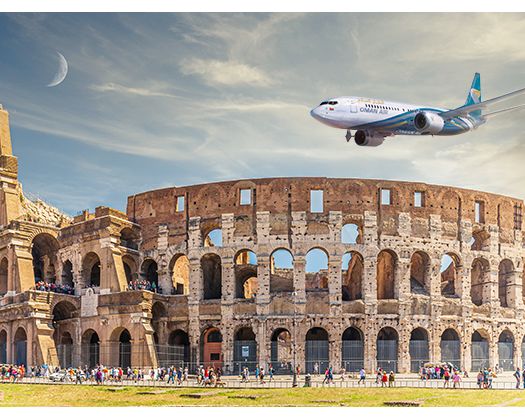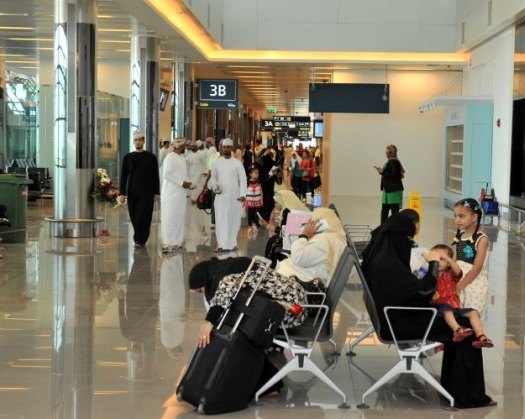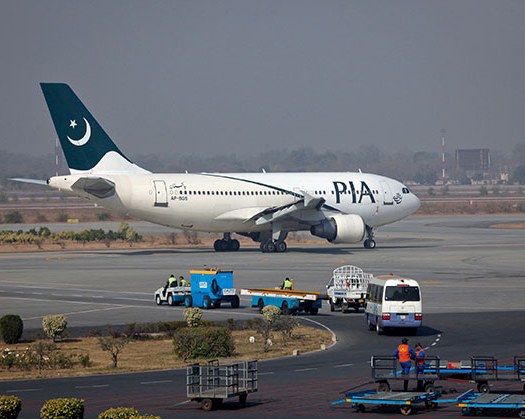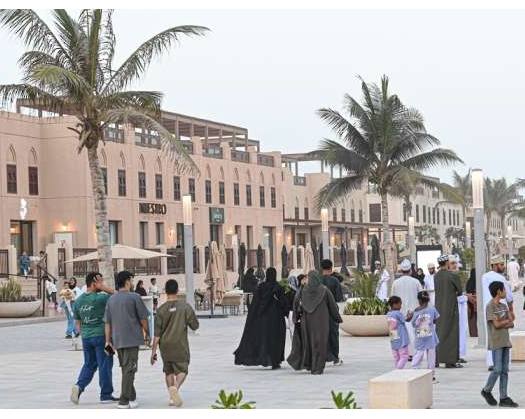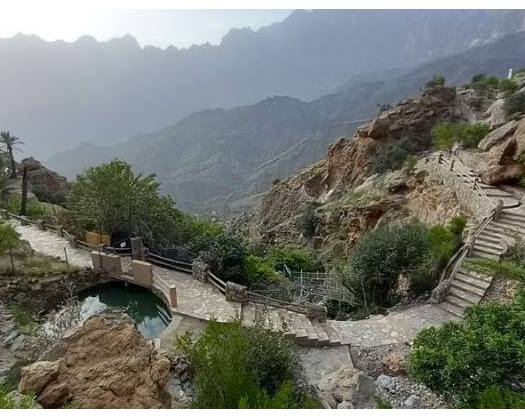Muscat: When in Rome, embrace the local customs.
This phrase perfectly encapsulated our experience during our visit to the Eternal City over the Eid holidays.
With nearly 3,000 years of history, Rome shows no signs of diminishing its allure.
It continues to be Italy's most popular destination, likely due to its wealth of ancient landmarks, rich culinary traditions, and distinctive style.
Arriving in Rome
Our arrival at Fiumicino Airport in Rome was seamless, especially when flying from Muscat International Airport with Oman Air.
The journey was marked by a smooth experience both on the ground and in the air, featuring comfortable seating and an unparalleled level of luxury that Oman Air guarantees, making every moment of the trip truly memorable.
Traveling in the economy class, I enjoyed the vibrant colors and modern, plush seating, complemented by exceptional dining options.
As I settled into seat 27A on flight WY147, I was greeted with a blanket, pillow, and headset.
What truly enhanced this flight was the impressive 10.6-inch screen and an extensive selection of inflight entertainment, offering a wide array of the latest Arabic, Bollywood, and international films—all easily accessible.
Typically, during long-haul flights in economy class, I find myself constantly checking the time and trying to keep busy with work, reading, or watching movies. However, this seven-hour daytime journey was a different experience.
The national airline has truly mastered the provision of onboard amenities and entertainment, even in its economy section.
The combination of smooth flight conditions, a bright and spacious cabin, outstanding inflight entertainment, thoughtfully prepared meals that delighted our palates, and attentive flight attendants made this trip feel significantly shorter and more enjoyable compared to other recent long-haul experiences.
With a configuration of 162 seats divided into two classes—12 in business and 150 in economy—Oman Air's flight to Rome stands out as one of the best I have encountered.
Travelers can fly with Oman Air from Muscat to Rome on Mondays, Wednesdays, Fridays, and Sundays.
The outbound flight leaves Muscat at 14:50, arriving in Rome at 20:10, while the return flight departs Rome at 21:10 and reaches Muscat at 05:45 the following day.
To find the best fares for flights to Rome, visit omanair.com.
https://www.omanair.com/
I had the opportunity to stay at the Hilton Rome Eur La Lama, which officially opened in February 2023, followed by a grand opening celebration in October 2023. This hotel features a distinctive design that emphasizes environmental sustainability, comprising 16 floors, reaching a height of 60 meters, and extending 130 meters in length and 16 meters in width. It boasts six panoramic elevators, 439 guest rooms, a restaurant, a bar, an upcoming rooftop dining option, a fitness center, and seven meeting rooms, all with direct access to the La Nuvola Convention Centre.
Situated in the vibrant EUR district of Rome, the hotel is a central hub for major corporations and offers a dynamic blend of shopping, entertainment, dining, and cultural experiences, all set against a backdrop of lush greenery and notable architectural landmarks.
The hotel’s futuristic design, a testament to architectural excellence, is aptly named “La Lama” (The Blade) due to its unique silhouette. It is located adjacent to the Rome Convention Centre La Nuvola (The Cloud), both designed by architect Massimiliano Fuksas.
With breathtaking views from every perspective, the hotel has quickly established itself as a city landmark and a prime destination for both international travelers and the local community. It serves as an ideal venue for business and leisure stays, as well as for events and meetings, thanks to its convenient location, which is easily accessible from Fiumicino and Ciampino airports, with a subway station just a short walk away.
For a concise overview of Roman history, much can be found in this piazza, particularly surrounding this hotel. Its distinctiveness is apparent from the moment you see its original structure soaring into the sky, a testament to the architectural brilliance of Architect Fuksas. Upon entering, guests are greeted by a striking sculpture by Arnaldo Pomodoro—a bronze stele that ascends like an obelisk, directing the eye through the expansive space all the way to the 16th floor.
As you face the reception desk, your attention is drawn to a large, impressive mosaic crafted by Marilù Rebecchini, which showcases the most famous sights and landmarks of Rome. This mosaic beautifully frames the reception area, designed by Studio Lorenzo Bellini Atelier, and reflects the hotel’s interiors, which prominently feature elements of Art Deco style from the 1930s and 1940s, as noted by Paolo Bellè, General Manager of Hilton Rome Eur La Lama, Hilton Rome Airport, and Hilton Garden Inn Rome Airport.
Attractions to Explore in Rome
Spanish Steps
This location offers a breathtaking panoramic view of Rome. Known for their romantic charm, these iconic steps have served as a gathering spot for artists and poets for over three centuries, allowing you to join the legacy of those who have walked them before.
Piazza della Rotunda
Named after the nearby Santa Maria Rotonda church, this square is home to the Pantheon. The focal point of the piazza is the Fontana del Pantheon, which was constructed in 1575.
Pantheon
Originally a Roman temple, this structure was erected on the site of an earlier temple that dates back to between 27 BC and 14 AD. Emperor Hadrian reconstructed it around 126 AD, and since 609 AD, it has been used as a Catholic church. Its dome holds the record as the largest unreinforced concrete dome in the world. The term "Pantheon" is loosely translated from Ancient Greek to mean "dedicated to all gods," although its original purpose remains somewhat unclear.
Sant’Ignazio Church
The striking exterior of this church draws attention, but the real surprises await inside. This Baroque church, built in the 17th century, features magnificent frescoes adorning its expansive ceiling. A strategically placed mirror allows visitors to appreciate the artwork without straining their necks.
Trevi Fountain
Constructed in 1762, the name "Tre vie" translates to "Three Streets Fountain," reflecting its location at the convergence of three of Rome's most significant roads. Experiencing the fountain in its full splendor is both enchanting and dreamlike. Here, you can toss a coin over your shoulder to make a wish while admiring its exquisite Baroque details.
The Colosseum
The Colosseum Archaeological Park manages one of the most frequented attractions in Rome, standing as a monumental testament to the city's history. This ancient site, dating back 2,000 years, was once the arena for gladiatorial contests, embodying a blend of both horror and stunning architectural elegance. Visitors will be amazed by the preservation of its structure, which symbolizes the might of the Roman Empire and offers insights into the lives of its ancient inhabitants. The impressive architecture is sure to leave you in awe, and if possible, make an effort to secure a night ticket to explore the underground areas and gladiator entrances, as well as to walk on the arena floor.
Footnote
Keep in mind that Rome is a city characterized by its hills, and maps do not always reflect the steepness of the terrain. Therefore, it may be more prudent to opt for a longer route rather than tackle a steep ascent.

